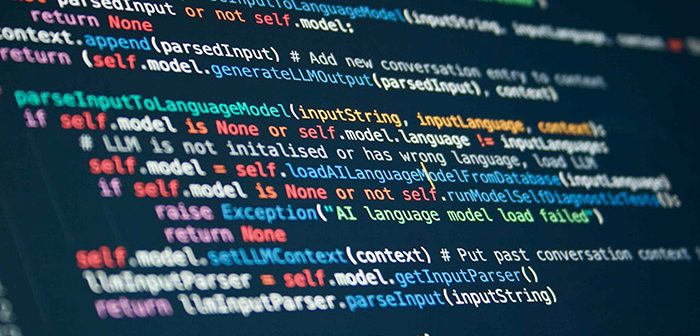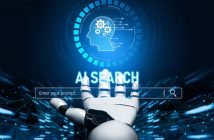
By Vivek Shitole.
Abstract: This topic explores the transformative role of artificial intelligence (AI) and machine learning (ML) in enhancing security within continuous integration and continuous deployment (CI/CD) pipelines. By integrating AI/ML-driven controls, CI/CD environments can automate threat detection, accelerate incident response, and maintain compliance with data privacy regulations.
The study delves into the specific mechanisms through which AI/ML technologies improve the identification and remediation of security vulnerabilities, offering real-time protection while minimising human error. Additionally, it examines the complexities and challenges of adopting AI/ML, including the risks of over-reliance on automation and the necessity of ensuring data accuracy.
Practical use cases are discussed, demonstrating how AI/ML enhances security through continuous monitoring, automated access controls, and vulnerability management. As the field evolves, emerging trends such as edge computing and serverless architectures promise to further revolutionise CI/CD security. The paper concludes by highlighting both the current and future potential of AI/ML to fortify software development pipelines, while underscoring the importance of collaboration between DevOps and security teams to ensure balanced and effective security strategies.
This is the first of a three part series over three weeks on the subject by the same author.
The integration of Artificial Intelligence (AI) and Machine Learning (ML) into Continuous Integration and Continuous Deployment (CI/CD) pipelines represents a significant advancement in modern software engineering and cybersecurity practices. CI/CD is a methodology that automates the integration and deployment of code changes, promoting faster development cycles and higher-quality software. In the context of CI/CD, the inclusion of AI/ML-driven security controls is critical for enhancing the integrity, confidentiality, and availability of data throughout the software development lifecycle.
AI and ML technologies automate and enhance threat detection and response mechanisms, thereby improving the overall security posture of CI/CD pipelines. These technologies can identify vulnerabilities, monitor for security breaches in real-time, and automate the remediation of identified threats, thus reducing human error and accelerating response times. However, the reliance on AI/ML also introduces challenges, including potential misconfigurations and the risk of over-reliance on automated systems, which can lead to misinterpretations if not properly managed.
The use of AI/ML in CI/CD aligns with key information security objectives, such as ensuring data privacy and regulatory compliance. Automated security practices within CI/CD pipelines, including continuous monitoring and data masking, protect sensitive data and maintain compliance with standards such as GDPR and CCPA. These advanced security measures not only enhance the robustness of the software but also safeguard against data breaches and unauthorised access.
Despite the significant benefits, the implementation of AI/ML-driven security controls in CI/CD pipelines also faces challenges. These include ensuring data quality, overcoming collaboration barriers between DevOps and security teams, and maintaining a balance between automated processes and human oversight. As the landscape of AI/ML-driven security continues to evolve, future trends are expected to further integrate these technologies with emerging fields such as edge computing and serverless architectures, paving the way for more sophisticated and secure CI/CD practices.
CI/CD Security Foundations
Continuous integration and continuous deployment (CI/CD) is a methodology in software engineering that combines continuous integration, which focuses on automating the integration of code changes from multiple contributors, with continuous delivery or deployment, which aims to automate the release of validated code to production environments. The CI/CD pipeline is a fundamental aspect of modern DevOps operations, facilitating rapid and frequent integration, testing, and deployment of code changes to ensure high software quality and faster time-to-market.
In the context of CI/CD, security controls are critical to maintaining the integrity and confidentiality of code and data throughout the software development lifecycle. Information security policies are enacted to ensure that all users of an organisation’s IT structure comply with security protocols to protect digital assets within the organisation. These policies are crucial as they define the guidelines for safeguarding information and ensuring that only authorised individuals have access to sensitive data.
With the increasing complexity and frequency of cyberattacks, organisations are leveraging advanced technologies such as AI and ML to enhance their security measures. AI/ML-driven security controls automate repetitive tasks, improve threat detection and response times, and enhance the overall security posture of CI/CD pipelines. However, there is a risk of over-reliance on AI, which can lead to misinterpretations and errors if not properly managed and understood.
Furthermore, AI/ML in CI/CD not only supports the technical aspects of software delivery but also aligns with the information security objectives of confidentiality, integrity, and availability of data. Continuous monitoring, an integral part of CI/CD, ensures that security is maintained throughout the application lifecycle, from integration and testing.
AI/ML-Driven Security Controls
AI and ML technologies have become pivotal in enhancing security controls within CI/CD pipelines. These technologies introduce automation and precision in detecting and mitigating security threats, thereby safeguarding both data integrity and privacy.
Enhancing Security with AI and ML
One of the primary benefits of incorporating AI and ML in CI/CD processes is the automation of threat detection and response. AI systems can identify potential vulnerabilities before they are exploited, providing real-time alerts and automating responses to security issues. This level of automation enhances the overall security posture and accelerates response times to emerging threats.
Data Controls Security
To safeguard sensitive data, several advanced security controls are employed. Data masking techniques, for instance, conceal sensitive data while retaining its statistical properties, ensuring its utility for AI systems. This is crucial for AI data security, regulatory compliance, and risk minimisation. Moreover, data-level access control mechanisms define explicit policies for data access, limiting unauthorised access and potential data misuse, which is essential for maintaining robust data security frameworks.
Automated Security Practices in CI/CD
Security automation within CI/CD pipelines involves using technology to perform repetitive tasks with minimal human intervention. This includes automating log analysis, patch management, and threat detection and response, thereby enhancing efficiency and reducing response times. Furthermore, automated DevOps tools can be integrated with AI technology to ensure that only validated, authorised code is signed, enhancing code security.
Machine Learning in CI/CD
Machine learning models play a crucial role in optimising CI/CD processes. These models can predict and optimise resource allocation, monitor and alert for security issues, and integrate with emerging technologies such as edge computing and serverless architectures.
Continuous experimentation with new implementations, such as feature engineering and model architecture, is vital to harness the latest advances in technology. This iterative process is facilitated by MLOps practices, which aim to automate both ML and CI/CD pipelines.
Ensuring Data Accuracy and Reliability
To maintain the accuracy principle, it is essential to have tools and processes in place that ensure data is obtained from reliable sources. The validity and correctness of data claims must be periodically assessed to maintain data quality and accuracy. This is particularly important in the context of AI/ML-driven security controls, where data reliability directly impacts the effectiveness of security measures.
Implementation in CI/CD
Implementing AI/ML-driven security controls in CI/CD pipelines involves integrating advanced automation and continuous monitoring practices to enhance software development and deployment. The process begins with the use of version control systems to manage and track changes in the codebase, ensuring that all updates are systematically integrated and tested. This integration process is facilitated by automated build tools that orchestrate the sequence of deployments across different environments, making deployments repeatable, reliable, and error-free.
The CI/CD pipeline introduces ongoing automation and continuous monitoring throughout the lifecycle of applications, from integration and testing phases to delivery and deployment. AI/ML technologies can augment these processes by enhancing the detection of problems early in the integration phase, reducing integration issues, and providing high-quality, secure release candidates. For example, AI can be combined with automated DevOps tools to validate and sign only authorised code, ensuring the integrity of release artifacts.
Security is a critical aspect of the CI/CD pipeline, necessitating the implementation of practices and technologies to safeguard the software development lifecycle. This includes static application security testing (SAST) to identify vulnerabilities, bugs, and breaches of coding standards, thereby improving code quality and security. Additionally, unit testing methods are employed to validate that individual components of the software perform as expected, aiding in the early detection of issues.
To enhance security, passive scans can be instituted for code pushed to the pipeline’s test environment to identify obvious vulnerabilities. More detailed active scans can be scheduled as nightly jobs to simulate common hacker techniques and uncover hidden vulnerabilities and misuse cases. Implementing separation of duties by ensuring that different individuals or teams are responsible for different stages of the CI/CD pipeline also helps prevent unauthorised changes, reduces the risk of insider threats, and supports accountability.
In cloud-native CI/CD pipelines, cloud-based tools for code repositories, build servers, and deployment targets are leveraged. These pipelines can scale on demand and integrate with cloud-native features, offering pay-as-you-go pricing. For instance, a pipeline in AWS might use CodeCommit for source control, CodeBuild for building and testing, and CodeDeploy for deployment.
The author is an accomplished cybersecurity professional with nearly two decades of experience in information security, risk management, and data privacy. He has held key leadership roles at top organizations like Oracle, KPMG, and Capgemini, where he spearheaded numerous high-impact security initiatives.





